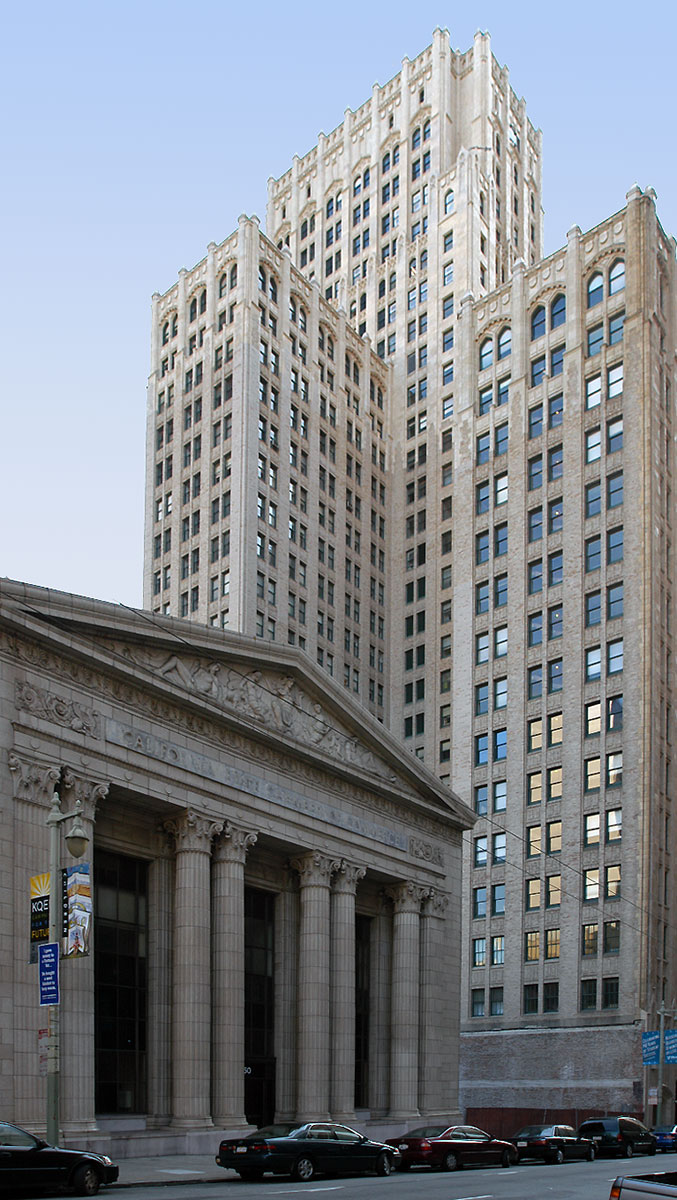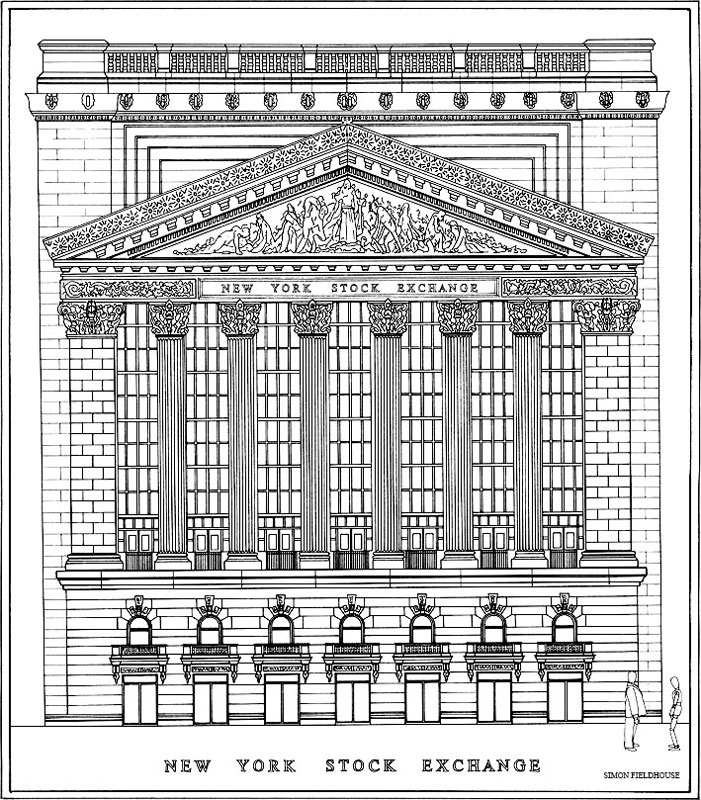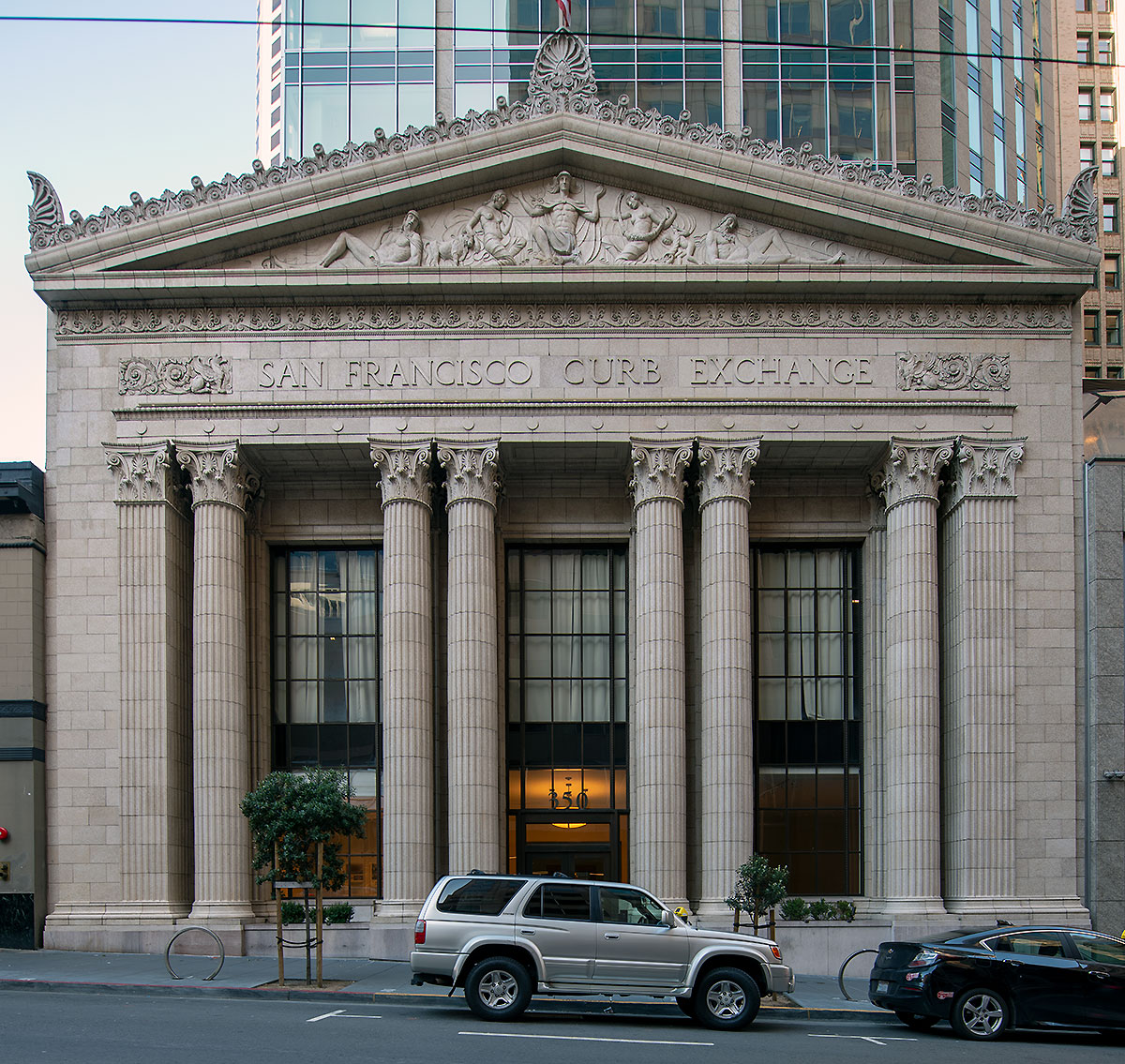San Francisco Landmark: San Francisco Mining Exchange

San Francisco Mining Exchange
Russ Building in Background
14 June 2003

Rendering of New York Stock Exchange
By Simon Fieldhouse
Source: Wikimedia Commons
San Francisco Mining Exchange
350 Bush Street Between Montgomery and Kearny
Built 1923
This building is the last remnant of the San Francisco Mining Exchange which dissolved in 1967. The exchange helped make San Francisco the financial center of the West. Names associated with the exchange include Coit, Sharon, Ralston, Mills, Hearst, Flood, Sutro, Hopkins and many more whose fortunes were founded or augmented on the exchange.
The discovery of the Comstock Lode in 1859 created the need for a central market for trading mining stocks. In 1862, the San Francisco Stock and Exchange Board was organized, housed first in the Montgomery Block, then in the Merchant's Exchange Building.
By the middle of the 1870's, the Exchange dominated the Western financial world, with capital from the East Coast and Europe pushing its volume of sales over that of the New York Stock Exchange, helping to establish the California-Montgomery Street area as "Wall Street West".
By the early 1880's, the Comstock began its permanent decline, and the Exchange's specialization in mining stocks proved disastrous. In 1882, the rival San Francisco Stock and Bond Exchange, dealing in a wide range of commodities, was formed and prospered.
The silver discoveries in Tonopah, Nevada, in 1903 gave the Exchange new life, and in the 1920's it commissioned Miller & Pflueger to design this Beaux Arts trading hall which closely resembles the New York Stock Exchange constructed twenty years earlier.
In 1929, the exchange, hard hit by the Crash, entered its final decline, with a brief revival during the uranium boom of the 1950's. An investigation of irregularities in its operation by the Securities and Exchange Commission resulted in an order to close, and on August 15, 1967, after almost 105 years of existence, the Mining Exchange came to an end.
Subsequently the building was occupied by the San Francisco Curb Exchange (1928-1938), the San Francisco Chamber of Commerce (1938-1967), and Western Title Insurance (1967-1979).
Adapted from the San Francisco City Planning Commission Resolution No. 8578 dated 1 May 1980.

The San Francisco Mining Exchange building was renovated in conjunction with the construction of a 19-story office tower at 350 Bush Street. It is a Public Open Space that houses the Mining Exchange Museum and a pedestrian link between Bush and Pine Streets.
